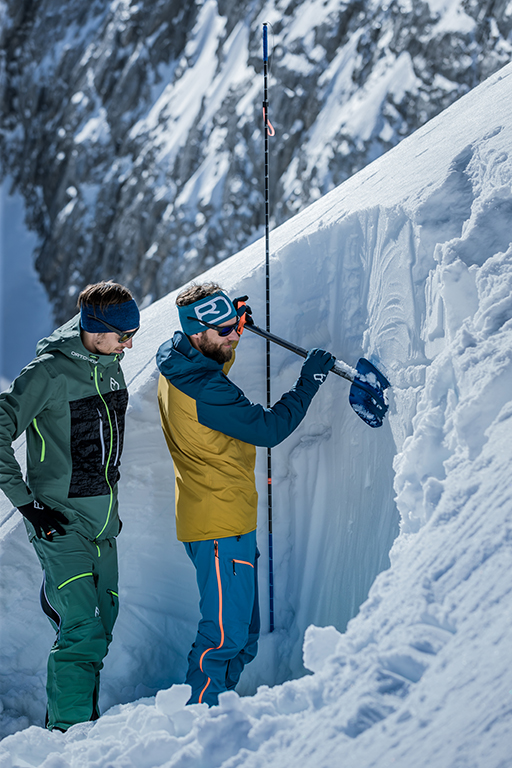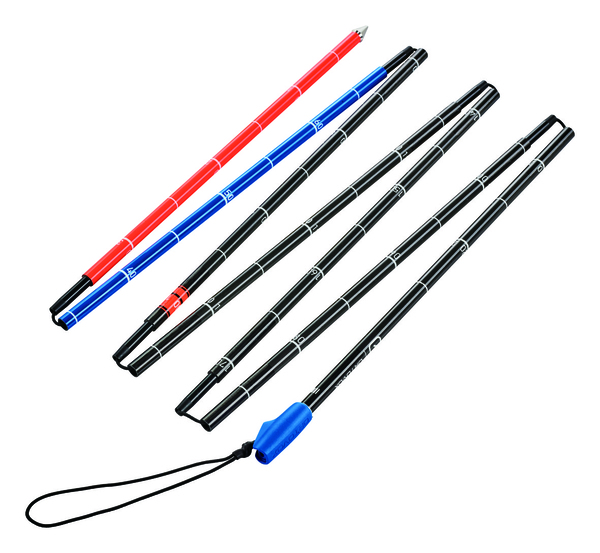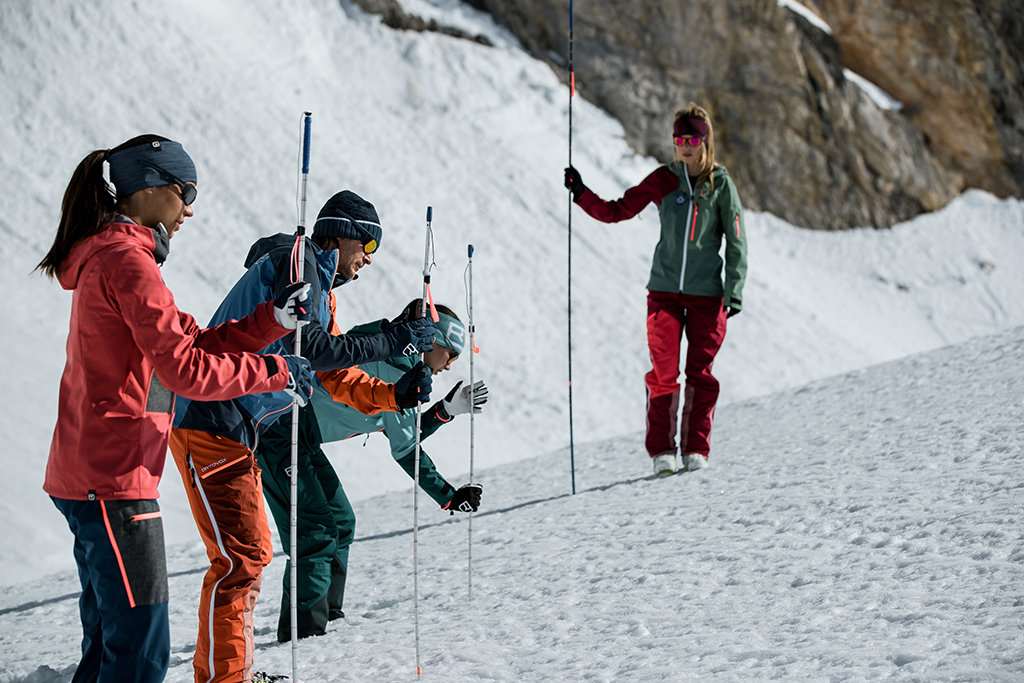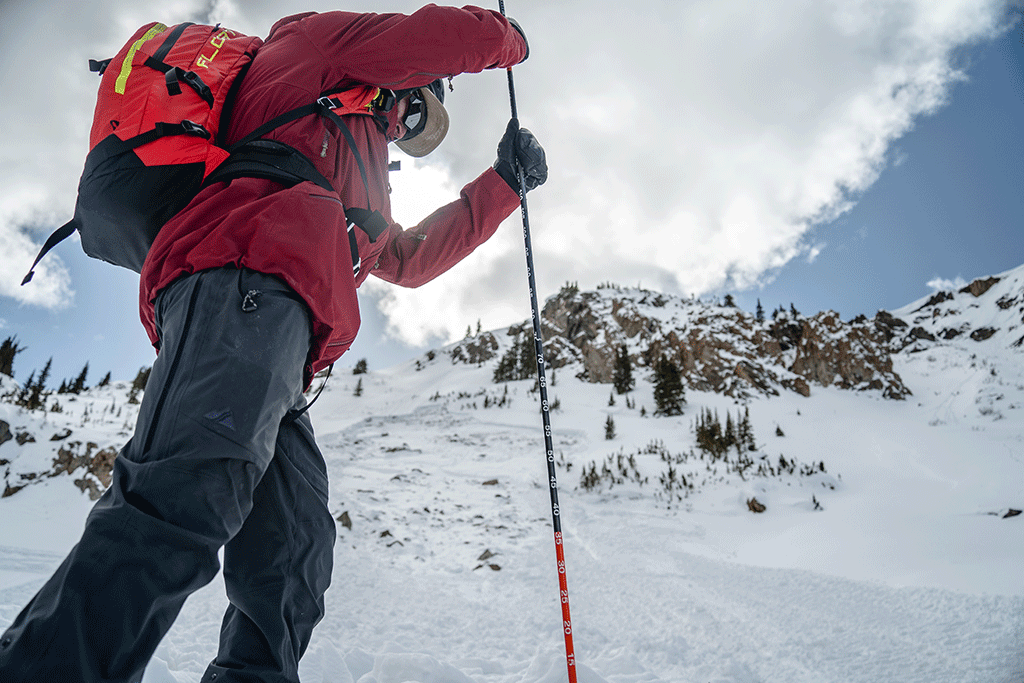What if someone gets buried in an avalanche in the backcountry? A probe is a gear that detects the burial point of an avalanche with a beacon and pinpoints the position of a buried person by sticking it in the snow. It is compact at 20 to 30 cm when folded, but when the cord is pulled, the shaft is jointed and automatically extends to 2 to 3 m. In order to go out in the backcountry, there are various things such as the probe, length and weight, shaft material and usability. What points should you focus on when making your selection?
The role of probes
A probe is a stick used to search for people buried in the snow. Also called a sonde stick. By the way, the probe is in English and the sonde is in German. Along with beacons and shovels, it is considered essential avalanche gear for backcountry (BC) skiing.
After locating the buried subject's approximate location with the beacon, the probe is stuck into the snow to more precisely locate the rescuer. A beacon can roughly locate a buried person, but it still doesn't know where to dig up a large snow surface to hit a buried person. Ultimately, it is detected by the tactile sensation of the probe.

Also, the probe has a scale. In addition to searching for an avalanche, it is also used for pit checks to check the depth and layer of snow to determine if the field you are going to ski is prone to an avalanche.
photo by ORTOVOX
How probes work
The probe can be quickly assembled into a single long stick by connecting 40 to 50 cm long cylindrical sticks with wires running inside. The rod part is called a shaft, and the longer it is, the more shafts there are.

The length varies depending on the application and environment, from less than 2m to over 3m.
When not in use, it can be folded for compact storage.

How to choose
The key points in choosing a probe are "length and thickness" and "material", then "how to assemble" and "easiness to see the scale".
■ Length + Thickness
Naturally, if the time is too short, sufficient search activity cannot be carried out.
If the burial depth in the event of an avalanche is 2m or less, there is a good chance that it can be rescued if a quick rescue is performed, so we want the length to be at least 2m or more. By the way, the ones used by mountain guides and mountain rescue teams are around 3m long, but if you're a general BC user and want to search for group members, you probably don't need to be as long as the professional ones. As for the thickness, if the diameter of the stick is too small and too thin, the strength will be insufficient and it will be difficult to penetrate hard snow. It can bend easily. In many cases, the longer one has a thicker diameter, and since a thicker one is less likely to bend or break, a certain thickness is better. Also, if one length to the shaft is too long, the joint tends to be unstable. I would also like to check the connection part.
Length and price are proportional to some extent. Considering the balance, it is easy to get around 230cm to 280cm. Also, in terms of storability, a bag with a length of about 50 cm when folded and shortened fits well in a backpack.
■ Material
The materials used for probes are very often aluminum or carbon. Carbon is more expensive, but much lighter. However, it is easier to break than aluminum when a certain amount of force is applied. At the same time, aluminum is strong and hard to break, but it also has the advantage of being flexible. If you're looking for lightness, choose carbon, or aluminum for cost performance.
■ Other elements
Other points to consider when choosing are the ease of reading the scale and the method of assembly. Many of them automatically and quickly assemble when the handle is pulled. There are also unique probes equipped with the latest technology that receive beacon signals at the tip of the probe, determine the position of the buried subject, and notify them of a hit with sound and light.
How to use the probe
Now that you know what a probe is, let's see how it actually works on snow.
(Video: Japan Avalanche Search and Rescue Council)
If you don't practice using the beacons and probes on the snow, you won't be able to use them quickly and accurately in the event of an avalanche. If you are new to backcountry skiing, it would be a good idea to get used to using the equipment by first taking a class on how to use avalanche gear or joining a tour with a backcountry guide with a class.

